Perception and Linguistic Form-A Cognitive Linguistic Analysis of the Copulative Perception Verb Construction(Hituzi Linguistics in English No.37) [単行本]Ω
『Perception and Linguistic Form-A Cognitive Linguistic Analysis of the Copulative Perception Verb Construction(Hituzi Linguistics in English No.37) [単行本]Ω』はセカイモンでkJ-000d996108から出品され、311の入札を集めて05月06日 18時 21分に、9,438円で落札されました。即決価格は9,438円でした。決済方法はに対応。静岡県からの発送料は落札者が負担しました。PRオプションはストア、取りナビ(ベータ版)を利用したオークション、即買でした。
目次 Acknowledgements List of Figures List of TablesCHAPTER 1 Introduction1.1 Aim of this Study1.2 Cognitive Linguistic Viewpoint1.3 Methods of this Study1.4 Significance of Including Appear in the Analysis1.4.1 Cognitive Division of Labor between Look and Appear1.4.2 Historical Development of the CPV Construction1.4.3 The Order of Look and Appear in the Same Text1.4.4 Look and Appear in Comparative Constructions1.4.5 The Relationship between Pragmatic Requirements and the Selection of Look or Appear1.4.6 Why Sound, but Not Listen?1.5 Significance of Observing Contextual Data1.6 OverviewCHAPTER 2 Theoretical Framework2.1 Introduction2.2 Basic Framework of Cognitive Linguistics2.2.1 Symbolic View of Grammar2.2.2 Conceptualization2.2.3 Usage-based Model2.3 Construal: Core Concepts of the Present Study2.3.1 Prominence: Profiling2.3.2 Perspective2.3.3 Subjectivity / Objectivity2.3.4 Subjectification2.4 The Notion of Construction2.4.1 Constructions in Langacker (1987a, 2005, 2008)2.4.2 Constructions in Goldberg (1995, 2006)2.4.3 Constructions as Prototype Categories2.4.4 Concept of Construction in This StudyCHAPTER3 Properties of the Copulative Perception Verb Construction and Studies Regarding Perception Verbs3.1 Introduction3.2 Unique Properties of the CPV Construction3.3 Argument Structure and Participant Roles3.4 Form and Meaning of the CPV Construction3.5 Previous Studies Regarding Perception Verbs3.5.1 Rogers (1971)3.5.1.1 Cognitive Verbs3.5.1.2 Active Verbs3.5.1.3 Descriptive Verbs3.5.2 Viberg (1984)3.5.2.1 Verbs of Perception in English3.5.2.2 Semantic Extensions across Sensory Modalities3.6 SummaryCHAPTER 4 Previous Studies of the CPV Construction4.1 Introduction4.2 Taniguchi (1997, 2005)4.2.1 Subject Alignment in CPVs4.2.2 Two Types of Perceptual Experience4.2.3 Idiosyncratic Properties of the CPVs from the Viewpoint of Cognitive Grammar4.2.4 Historical Development4.2.5 The Origin of the Adjectival Complement4.2.6 Extension to Uni-directional Perception Verbs by the Shift of the Profiled Relation4.2.7 Backgrounding of Experiencer: Genericity and Subjectification4.2.8 General Copula: Be and Seem vs. CPVs4.2.9 Extensions from CPVs to Action Verbs4.2.10 Problems with Taniguchis (1997, 2005) Arguments4.3 Honda (2005)4.3.1 An Ecological Approach to Self Perception4.3.2 Point of View4.3.3 Communality of Point-of-Observation4.3.4 The Semantics of First Person Pronouns4.3.5 Affordance-Theoretic Approach to Middle and CPV Constructions4.3.5.1 Middle Construction4.3.5.2 CPV Construction4.3.5.3 Verbs of the Middle and CPV Constructions4.3.6 Problems with Hondas (2005) Arguments4.4 SummaryCHAPTER 5 Unique Properties of the CPV Construction and Copulative Perception Verbs5.1 Introduction5.2 Unique Properties of the CPV Construction5.3 Copular Verbs5.3.1 Quirk et al. (1985)5.3.2 Visser (1963)5.3.3 Horton (1996)5.3.3.1 Non-Copulas (Action Verb + Adjective)5.3.3.2 Quasi Copulas5.3.3.3 True Copulas5.3.4 Differences between Seem/Appear and Other CPVs5.3.4.1 Impersonal Forms and Infinitival be5.3.4.2 Infinitives5.3.4.3 Existential There, Hedge Expressions and Substitution5.3.4.4 Like with the Meaning of as if5.3.4.5 Summary of Section 5.3.45.4 Seem and Appear as CPVs5.4.1 Original Meanings of Seem and Appear5.4.1.1 Seem as a Subjective Verb5.4.1.2 Appear as a Subjective Verb5.4.2 Seem as a CPV5.4.3 Appear as a CPV5.5 Classifications of Perception Verbs in Previous Studies5.5.1 Rogers (1971)5.5.2 Viberg (1984)5.5.3 Gisborne (2010)5.5.4 Quirk et al. (1985)5.5.5 Kashino (1998, 2012)5.6 Classification of Perception Verbs in this Study5.6.1 Occurrence/Emission Perception Verbs5.6.2 Active Perception Verbs5.6.3 Passive Perception Verbs5.6.4 Specific Examples of Perception Verbs5.6.5 Metonymy in the CPV Construction5.6.5.1 Metonymy5.6.5.2 CPV Selection in Terms of Metonymy5.7 SummaryCHAPTER 6 Cognitive Division of Labor between Look and Appear in the CPV Construction6.1 Introduction6.2 The Difference of the Mode of Cognition between Look and Appear6.3 Limitation by the Lexical or Sentence-level Observation of Distribution between Look and Appear6.4 Significance of Adopting Contextual Data in the Cognitive Linguistic Study6.5 Fact of Language Use that Look and Appear are Selectively Used in the CPV Construction6.6 Cognitive Division of Labor between Look and Appear in the CPV Construction6.6.1 The Way of the Cognitive Division of Labor Works6.6.2 Data Analysis6.6.2.1 Text A (= 105)6.6.2.2 Text B (=106)6.6.2.3 Text C (=107)6.6.2.4 Text D (=108)6.6.2.5 Text E (=109)6.6.3 Expected Refutations6.6.4 Results of a Survey6.7 SummaryCHAPTER 7 Cognitive Division of Labor Due to the Development of the Construction7.1 Introduction7.2 Two Types of NP in Subject Position within One Construction7.3 Two Patterns in the Development of CPVs7.4 Historical Development of CPVs7.4.1 Extension Process from Seem/Appear to Smell/Sound7.4.2 Extension Process from Seem/Appear to Look/Taste/Feel7.4.2.1 Middle Construction7.4.2.2 Historical Development of the Middle Construction7.4.2.3 Characteristics of the Middle Construction7.4.2.4 Interim Summary7.5 What Made the Cognitive Division of Labor between Look and Appear Possible?7.6 Overview of Historical Development of Seem/Appear and the Other Five Perception Verbs7.7 Intra-Constructional and Inter-Constructional Development of the CPV Construction7.7.1 Secondary Division of Labor (Intra-Constructional): Loom, Ring, and Listen as Perception Verbs7.7.2 Extension of the CPV Construction to the Middle Construction (Inter-Constructional)7.8 SummaryCHAPTER 8 The Order of Look and Appear in the Same Text8.1 Introduction8.2 Method of Analysis8.3 The Order of Occurrence of Look and Appear and the Underlying cognitive processes8.3.1 The Order of Occurrence of Look and Appear8.3.2 Preferential Looking8.3.3 The Relationship between Selection of Look and Preferential Looking8.4 Data Analysis8.4.1 Look Preceding Appear8.4.1.1 Data of Look Preceding Appear and Cognitive Motivation8.4.1.2 The Meaning of Look Preceding Appear8.4.2 Appear Preceding Look8.4.2.1 The Meaning of Appear Preceding Look8.4.2.2 Data of Appear Preceding Look and Cognitive Motivation8.4.3 Difference in Text Genre with Look-First and Appear-First8.5 SummaryCHAPTER 9 Selective Use between Look/Appear: Pragmatic Requirements9.1 Introduction9.2 “You look cold” vs. “I appear cold”: The Meaning of Appear9.3 Look and Appear in Comparative Constructions9.4 Distribution in Terms of Interpersonal Communication9.4.1 Is “Appear Beautiful” an Inappropriate Expression?9.4.2 Person Bias in Look and Appear9.4.3 Negative Meaning of Adjectival Complements with Look and Appear in Interpersonal Communication9.4.4 CPVs vs. Copular Verb Be9.5 SummaryCHAPTER 10 Two Different Perception Verb Constructions for Visual Perception: Two Different Patterns of Construal10.1 Introduction10.2 Previous Studies on Perception Verb Complements10.2.1 Carlson (1977, 1980)10.2.2 Jäger (1999, 2001)10.2.3 Kirsner and Thompson (1976) 10.3 Characteristics of the Transitive Perception Verb (TPV) Construction10.3.1 Adjective Types and Perception Verb Tenses10.3.2 The TPV Construction at the Sentence Level10.3.3 The TPV Construction at the Discourse Level10.3.4 Preference for Perceptual Moment Domain, Person, and Adjective10.3.5 Form and Meaning of the TPV Construction10.4 Differences in Construal between the CPV and TPV Constructions10.4.1 Perceptual Process10.4.2 Tendency in the Perceptual Moment Domain: Pastness10.4.3 Immediacy and Displacement10.4.4 Perspective from Inside or Outside10.4.5 Self-Objectification and Points of Observation10.4.6 Degree of Subjectivity10.4.7 Non-Visual Perception Verbs10.5 SummaryCHAPTER 11 Adjectival Complement in the CPV and TPV Constructions: Property Description in the Perception Verb Constructions11.1 Introduction11.2 Adjectives: Interactions between Cognitive Subject and Cognitive Object11.2.1 Cognitive Patterns of Adjectival Expressions11.2.2 The ‘Kaleidoscopic’ Nature of Adjectives11.2.3 Tow Functions of Adjectives11.3 Previous Studies about Property Description11.3.1 Kageyama (2006, 2009b)11.3.2 Masuoka (1987, 2008, 2013)11.3.3 Nitta (2012)11.4 Cognitive Processes in Property Descriptions11.4.1 Causal Attribution11.4.2 Cognitive Processes in the Property Description of Tall11.4.2.1 Tall : Profiling the Relation between its Landmark and Trajector11.4.2.2 Tall : Relation to Specific Frames11.5 Property in the Perception Verb Constructions11.5.1 Acceptability of Property Descriptions in the CPV Construction11.5.2 Unacceptability of Property Descriptions in the TPV Construction11.6 Unconventional TPV and CPV Constructions11.6.1 A TPV Construction that Does Describe Property 11.6.2 A CPV Construction that Cannot Describe Property11.7 SummaryCHAPTER 12 Conclusion References Index内容紹介本書は知覚動詞構文に関する様々な疑問を解き明かす。Mary looks happy.は「私」が認知主体なのになぜMaryを主語とするのか。Mary appears happy.とはどう異なるのか。That sounds interesting.の動詞はなぜlistenではだめなのか。非文法的とされるI saw him tall.のような構文が小説などで散見されるのはなぜか。これまで見過ごされてきた言語事実を提起し、談話データの文脈的要因に焦点を当てて知覚動詞構文を認知言語学的そして語用論的に捉え直す。著者について徳山 聖美 (トクヤマ キヨミ)徳山 聖美(とくやま きよみ)略歴1958年兵庫県生まれ。2015年神戸市外国語大学大学院博士課程単位取得退学。博士(文学)(2018年 神戸市外国語大学)。現在、近畿大学経営学部非常勤講師。認知と言語の相互作用に興味があり、事態に対する解釈の仕方がどのような形で言語現象に反映されるのかについて、特に知覚動詞構文を中心に認知言語学および語用論の観点から研究を行っている。
![Perception and Linguistic Form-A Cognitive Linguistic Analysis of the Copulative Perception Verb Construction(Hituzi Linguistics in English No.37) [単行本]Ω](https://image.yodobashi.com/product/100/000/009/003/834/604/100000009003834604_10204_001.jpg)
- カテゴリ
- タグ
-
- Perception
- and
- Linguistic
- Form-A
- Cognitive
- Linguistic
- Analysis
- of
- the
- Copulative
- Perception
- Verb
- Construction(Hituzi
- Linguistics
- in
- English
- No.37)
- [単行本]Ω
セカイモン販売中の類似商品
-

Toward a Diverse Society:Learn-多様な社会を目指して:メディア動画を通して学ぶ英語 [単行本]Ω
¥ 1973
-

日本文化は英訳できるか、禅は西洋に根付くか―俳句・公案そして佐々木指月の生涯 [単行本]Ω
¥ 4976
-
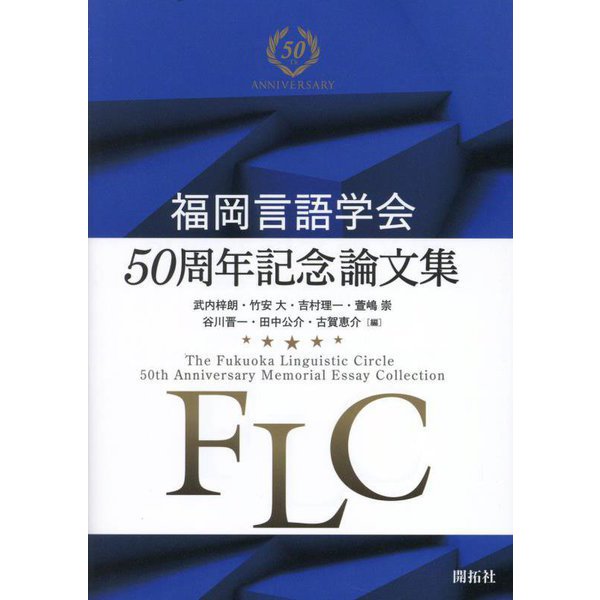
福岡言語学会50周年記念論文集―The Fukuoka Linguistic Circle 50th Anniversary Memorial Essay Collection [単行本]Ω
¥ 6178
-

現代英語基礎語辞典 [単行本]Ω
¥ 1716
-
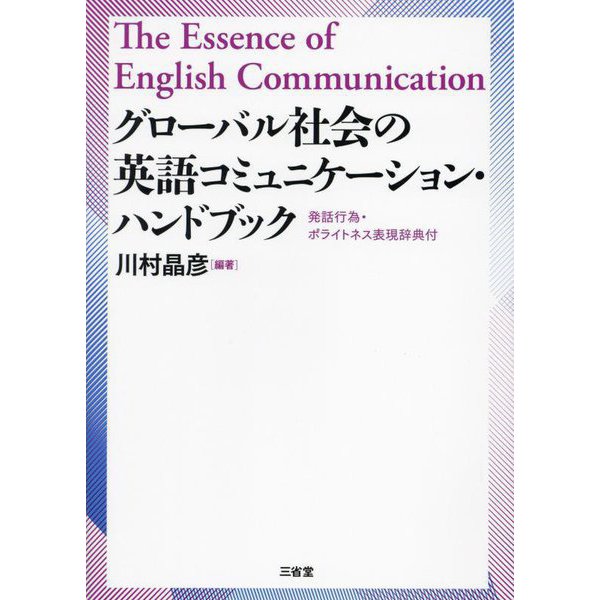
グローバル社会の英語コミュニケーション・ハンドブック―発話行為・ポライトネス表現辞典付 [単行本]Ω
¥ 3003
-
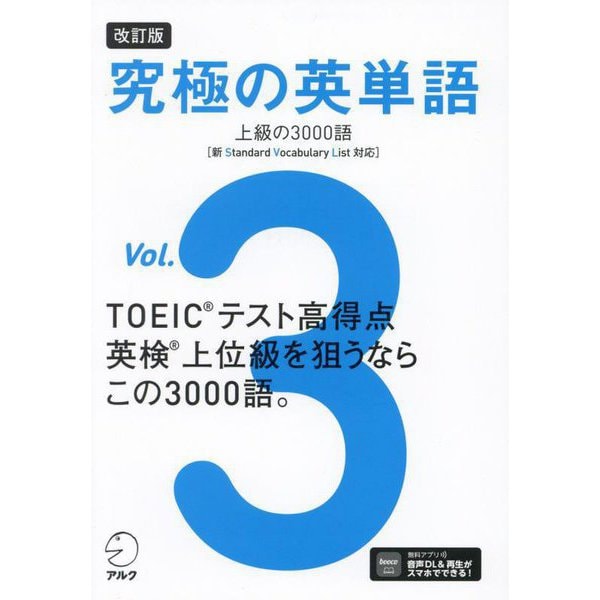
究極の英単語〈Vol.3〉上級の3000語 改訂版 [単行本]Ω
¥ 1716
-
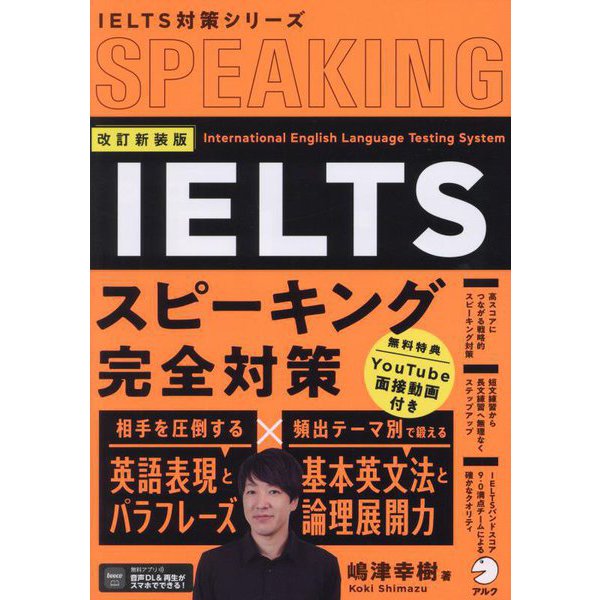
IELTSスピーキング完全対策 改訂新装版 (IELTS対策シリーズ) [単行本]Ω
¥ 2145
-

Discourse Marker Well in Spoken English―Some Suggestions for Politeness and Cross-Linguistics [単行本]Ω
¥ 5148
-

ペンがおしゃべり! えいご絵じてん プレミアムセット 新装三訂版 [単行本]Ω
¥ 7636
-

ペンがおしゃべり! 小学えいご絵じてん 800 新装三訂版 [単行本]Ω
¥ 5920
-

ペンがおしゃべり! ベビー&キッズ えいご絵じてん 500&22 SONGS 新装三訂版 [単行本]Ω
¥ 5920
-

改訂第2版 世界一わかりやすい 関西大の英語 合格講座 人気大学過去問シリーズ [単行本]Ω
¥ 1630
-
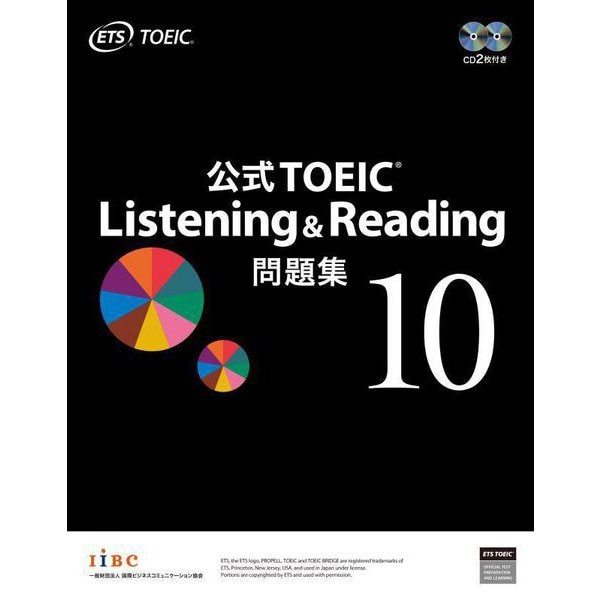
公式TOEIC Listening & Reading問題集〈10〉 [単行本]Ω
¥ 2574
-

英語イメージ大図鑑―A COMPREHENSIVE VISUAL GUIDE TO THE ENGLISH LANGUAGE [単行本]Ω
¥ 1931
-

高校英文法をもう一度ひとつひとつわかりやすく。 [単行本]Ω
¥ 2016
-
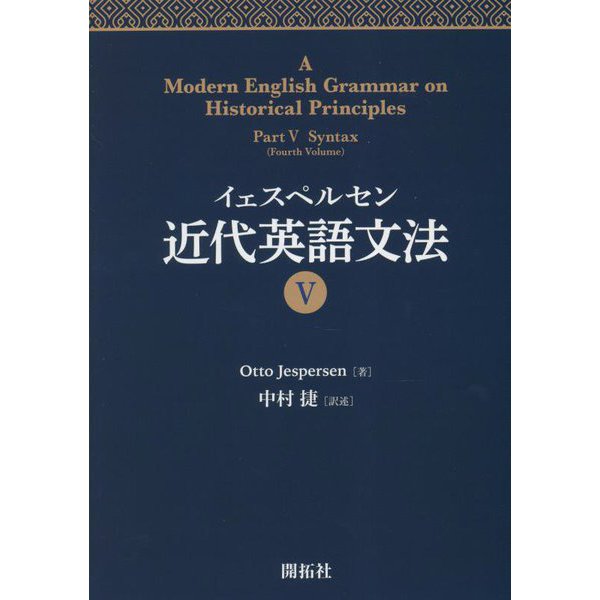
イェスペルセン近代英語文法〈5〉 [全集叢書]Ω
¥ 5320
-

ChatGPT翻訳術 新AI時代の超英語スキルブック [単行本]Ω
¥ 1630
-
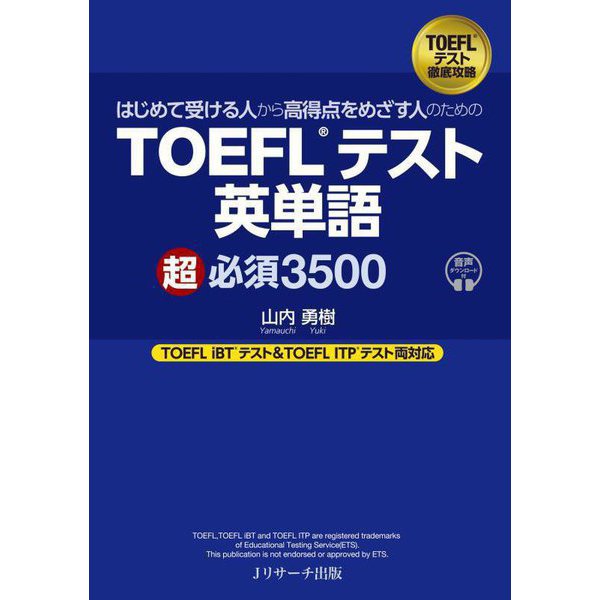
TOEFLテスト英単語超必須3500―はじめて受ける人から高得点をめざす人のための [単行本]Ω
¥ 2402
入札件数
311 入札履歴
残り時間
終了
- 落札情報
- 出品者情報
- 落札価格
- 9438円
- 開始価格
- 9438円
- 即決価格
- 9438円
- 入札単位
- 100円
- 商品状態
- 新品、未使用
- 個数
- 1
- 開始日時
- 2025.02.26 3:27
- 終了日時
- 2025.05.06 16:52
- 自動延長
- なし
- 早期終了
- なし
- 入札者評価制限
- あり
- 入札者認証制限
- あり
支払い・配送方法
- 支払い方法
-
- 送料負担
- 落札者
- 発送元
- 静岡県
- 海外発送
- 対応しません
- 発送方法
- -
商品説明
こちらの商品をお気に入り登録しませんか?
オークファンの無料会員に登録すれば
一度検索した商品をお気に入り登録可能。
マイブックマーク機能で
いつでもすぐに登録した商品を
見返すことができます。
既に会員の方はこちらからログインをお願いいたします
会員登録で同じ商品を出品!
「同じ商品を出品する」機能のご利用には
オークファン会員登録が必要です。
入札予約
最大10年分の相場を簡単検索!
価格を表示するには、
オークファンプレミアム(月額8,800円/税込)の登録が必要です。
まずはお試し!!初月無料で過去の落札相場を確認!
- ※クレジットカードのみ初月無料の対象となります。
-
※登録月が無料となり、登録月の翌月より料金が発生します。
初月無料対象月内に利用再開を行った場合、初月無料の対象外となります。
期間おまとめ検索とは?
オークションで稼ぐための人気機能!

「期間おまとめ検索」を使えば、複数月をまたいだ指定期間の相場検索が可能です。レアな商品の相場や過去の出品数をまとめて確認できます。
さらに、オークファンプレミアムに登録すると最大過去10年分の相場データが月1,200回まで閲覧可能です。
最大10年分の相場を簡単検索!
価格を表示するには、
オークファンプレミアム(月額2,200円/税込)の登録が必要です。
まずはお試し!!初月無料で過去の落札相場を確認!
- ※クレジットカードのみ初月無料の対象となります。
-
※登録月が無料となり、登録月の翌月より料金が発生します。
初月無料対象月内に利用再開を行った場合、初月無料の対象外となります。



